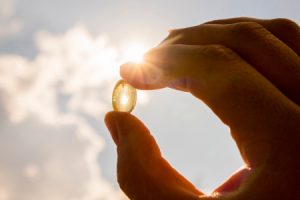
Vitamin D Is An Essential Nutrient.
Most of us do our best to stay healthy. And, in so many ways, vitamins and minerals play essential roles in maintaining human health. In fact, we’re still learning more and more about the numerous benefits of these nutrients, including Vitamin D.
We know that Vitamin D is especially crucial to healthy teeth and bones. (That’s because, together with the mineral calcium, it helps facilitate calcium absorption into the body’s systems.) But research shows that it may also provide protection against chronic conditions such as diabetes, cardiovascular disease, and cancer.
Where Can I Get It?
One of the best parts about Vitamin D is that you can get it for free (at least during the summer months). Yes, that’s because it can come from the sun. It’s not actually in the sunlight itself—instead, the sunshine on our skin stimulates Vitamin D production right in our bodies. For those living in the temperate latitudes of North America, as little as 10 to 15 minutes of midday sunlight on exposed skin can be more than enough to get your daily recommended amount.
However, those with darker skin tones (such as people of African descent) may take between 25 and 40 minutes to receive a comparable amount. This difference really does make getting your daily dose more challenging and time intensive, so be sure you are getting enough in your diet. Additionally, during the winter, the weakened intensity of the sun will make it impossible for anyone to benefit much from this approach, so dietary sources become even more crucial.
Luckily, Vitamin D is available in many of the foods and drinks that we already consume. Either naturally occurring or artificially fortified, common sources of this essential nutrient include dairy products, cheese, eggs, mushrooms, and protein such as salmon or other oily fish.
